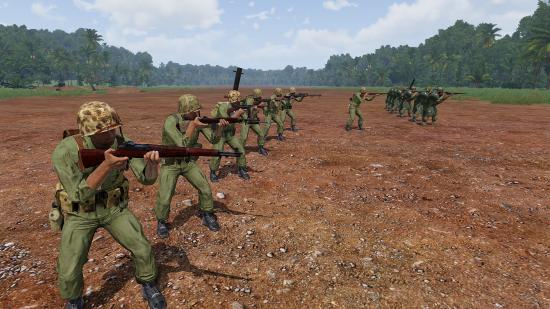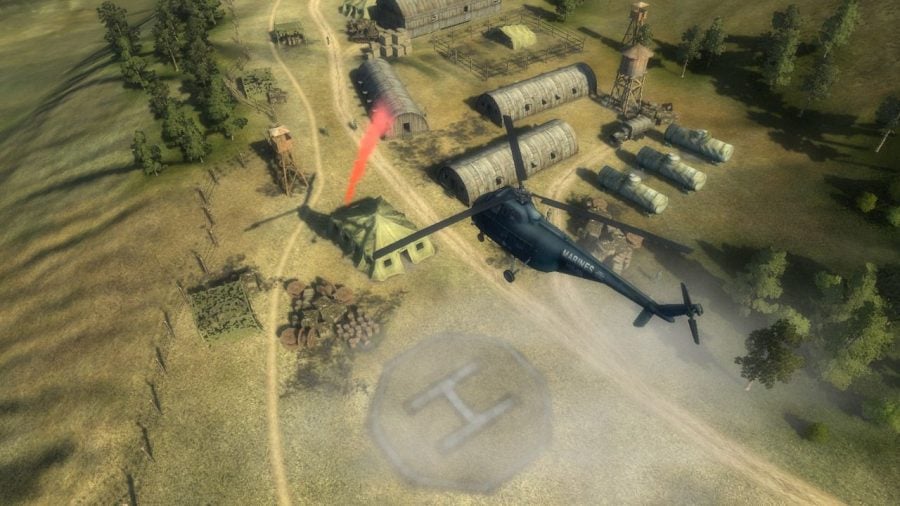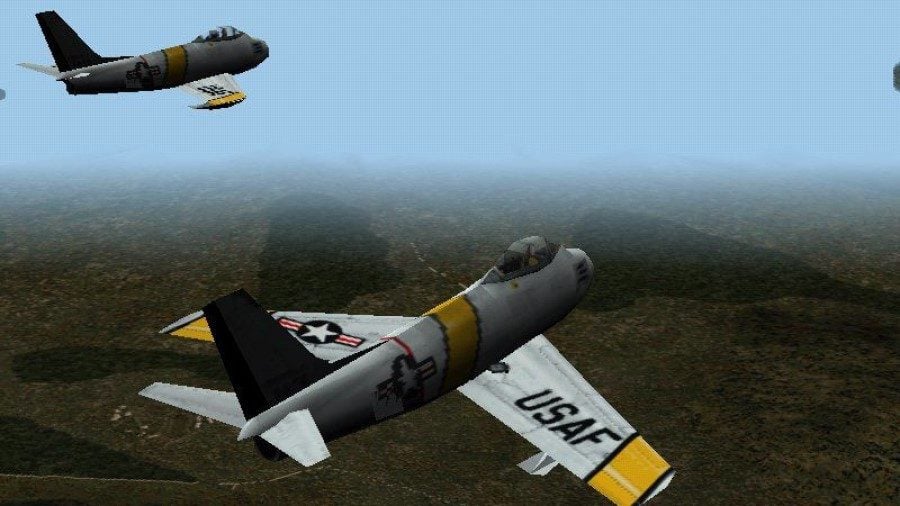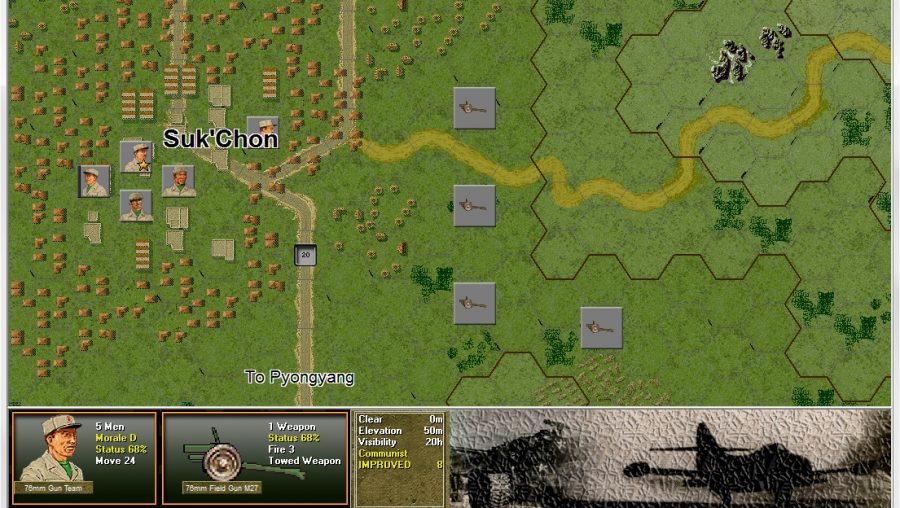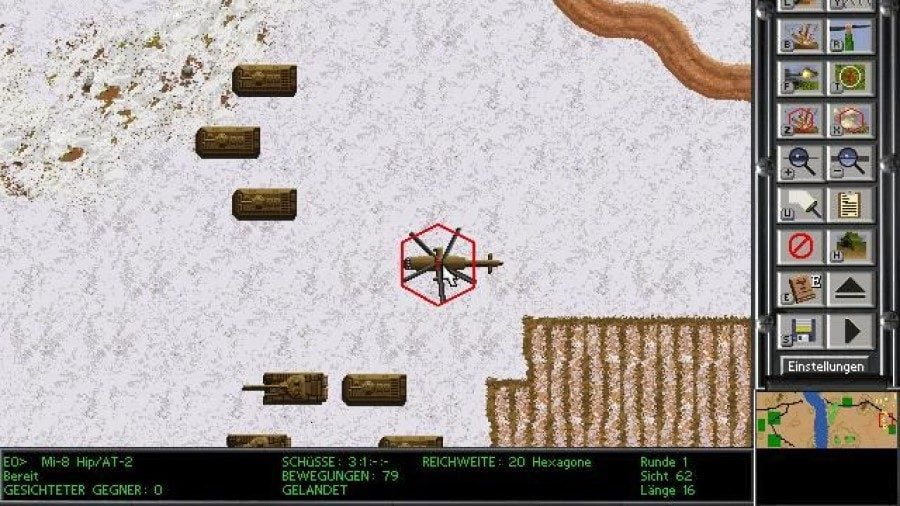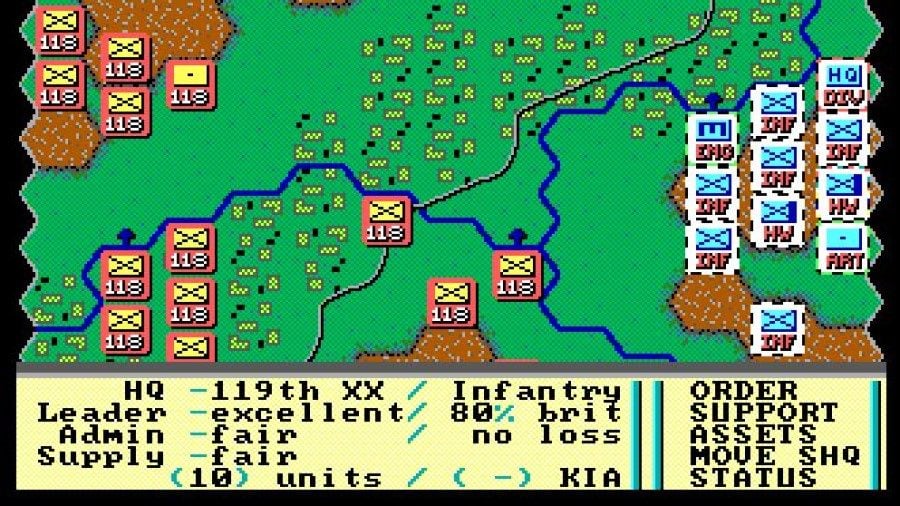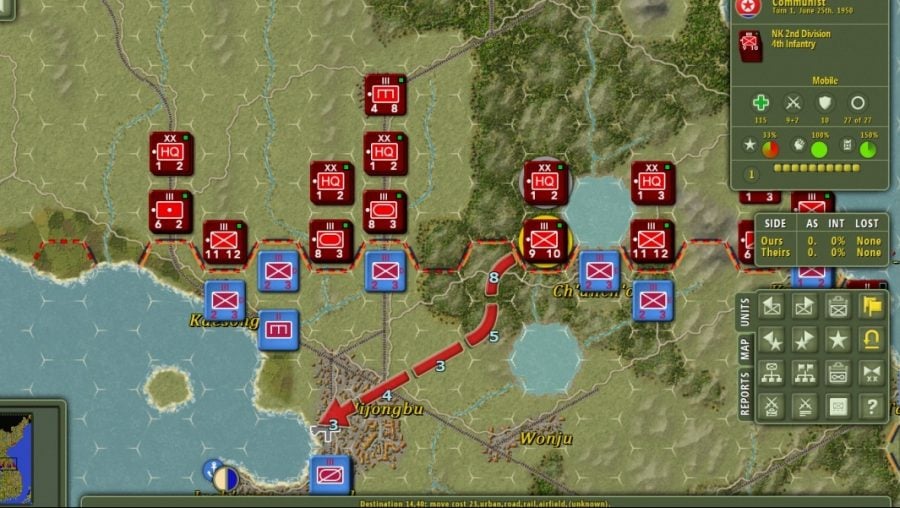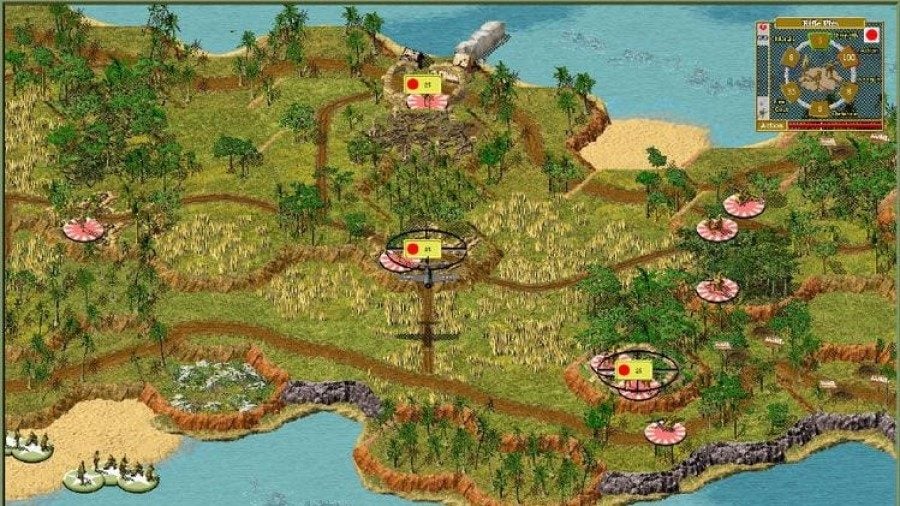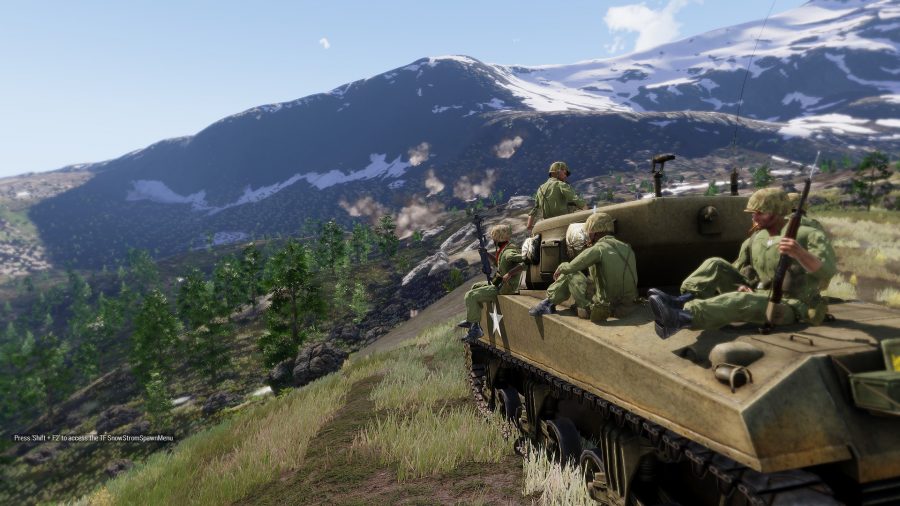When it comes to Korean War games, the gaming world suffers from a perpetual shortage of games in any genre at all. In contrast to the bulging libraries of WW2 games, Vietnam War games, Napoleonic games, Medieval games, Cold War games, or videogames covering almost any other key historical conflict, the Korean War (1950-53) simply hasn’t been a popular setting for games or film.
The reasons for this are open to speculation; my own view is that it’s much tougher to map the sides of the conflict onto simplified notions of 'good guys' and 'bad guys,' and that the west runs into difficult moral territory when we start talking about how the fighting came to a provisional close. Korea was a difficult, brutal, and depressing war, and the lack of a clear-cut resolution makes it unattractive as a source of American myth-creation.
All that to say this: I’ve decided to cheat heavily in creating this list. The selection of actual Korean War games is small enough that it’s hard enough to even create a list of them that are playable on modern machines, much less a list of 'the best' of those. Therefore, I’m expanding my scope to include a few categories that wouldn’t otherwise be considered: these include generic cold war games as well as Korean war-themed mods.
Preliminary throat-clearing out of the way, it’s time to strap in. We’re in for a bumpy ride.
What are the best Korean War Games?
- Theatre of War 3: Korea
- MiG Alley
- John Tiller’s Squad Battles – The Korean War
- Steel Panthers II: Modern Battles
- Steel Panthers: MacArthur’s War: Battles for Korea
- Twilight Struggle
Theatre of War 3: Korea
Publisher: 1C Company
Purchase: Steam
Right away, I’ll have to qualify my recommendation here. While 1C Company has made some very nearly excellent real-time strategy wargames – particularly the Assault Squad series – Theatre of War 3 can’t honestly be counted among the best of them. AI ranges from fiddly to terrible, the “dynamic” campaigns aren’t actually very interesting, and it’s riddled with the jankiness that even newer 1C titles haven’t been able to rid themselves of completely.
That said, Theatre of War 3 provides one of the vanishingly few dedicated, out-of-the-box Korean War strategy experiences available, and it added some key innovations to the 1C formula. The campaigns are non-linear and change based on your performance and decisions, and it adopts a more squad-focused control scheme, saving you from having to manage each individual soldier as in the first Men of War. Theatre of War 3 also adds some of the important new hardware of the time, like transport helicopters, new artillery pieces, and jets. I’ve been particularly impressed with the terrain, which features steep Korean mountain ranges and rural architecture that set it apart from 1C’s WWII games.
You’ll have to be pretty forgiving with this one, particularly if you’ve gotten used to the new-fangled conveniences of Assault Squad 2, but as Korean War games go, this is one of the most focused and modern, sadly enough.
MiG Alley
Publisher: Empire Interactive
Purchase: Used CD-ROM, via Amazon
The late ‘90s saw several ambitious flight sims take on the Korean War: Virgin Group’s Sabre Ace: Conflict Over Korea and Rowan Software’s response, MiG Alley two years later. It was the latter game that really shone, though, with a healthy selection of aircraft, a very good flight model for its time, and not one but five dynamic campaigns. While the first four had you flying pre-planned scenarios, the fifth campaign depicts the 1951 Spring Offensive, and gives you operational control of more than a hundred aircraft involved.
In terms of roster, MiG Alley was pretty generous: you had the F-84 Thunder jet, several variants of the F-86 Sabre, the P-51 Mustang, F-80 Shooting Star, and a couple MiG-15 variants as well. They all felt distinct in the air, too, thanks to the game’s attention to detail on the individual aircraft flight models.
MiG Alley came out back when it was normal to package flight simulators with 100+ page instruction manuals, and Rowan went the extra mile by further including not only a keyboard overlay and a booklet solely dedicated to explaining the difference between the F-86 and the MiG-15, but also a paper reproduction of an actual 1952 RAF briefing sheet.
Unfortunately, despite glowing critical reviews, MiG Alley sold abysmally. Empire Interactive shut down Rowan Software in 2001, but the source code was released so that the player community could keep updating the game. The license for the source didn’t include textures or terrain details, but you can find the rest of it over on GitHub.
John Tiller’s Squad Battles – The Korean War
Publisher: John Tiller Software
Purchase: Direct
Given his prodigious output and accompanying stature in the wargaming space, John Tiller’s games represent a glaring gap in my gaming history. Tiller has covered the Napoleonics to modern conflicts like the 1985 Fulda Gap and everything in between, so it should come as no surprise that he’s found time for an entry devoted to the Korean War.
Squad Battles: The Korean War uses an older version of Tiller’s 40-meter hex system for turn-based battles focused on individual fireteams of five soldiers, and it includes three separate campaigns that span a total of 70 scenarios designed by “Wild” Bill Wilder.
These cover the full shooting war period from 1950 to the 1953 ceasefire, and it includes units from Australia, Britain, Canada, China, and Turkey along with the United States, South Korea, and North Korea.
Tiller’s games are in the classic wargame style and have very little in the way of modern frills. But they’re surprisingly accessible and simple to pick up and play, while still affording enough room for a healthy level of tactical depth. The campaigns follow individual officers and their units as they’re carried along in the see-saw fighting back and forth across the 38th Parallel, and while the presentation is a bit Spartan, Tiller Software provides additional color with historical flavor text and a wide variety of accurate missions.
Tiller returned to the Korean peninsula for a hypothetical modern conflict with Korea ’85.
Steel Panthers II: Modern Battles
Publisher: Mindscape Inc.
Purchase: The free and enhanced version, winSPMBT is available from ShrapnelGames
I regret the fact that I missed out on the Steel Panthers games back when they were fresh – my interest in tanks around that time was largely eaten up by a ridiculous little sci-fi game called Command & Conquer. But even though I skipped over SSI’s hex-based armor classics at the time, their influence can still be felt today. Matrix Games bought the rights to Steel Panthers and released Steel Panthers: World at War in 2000, and the Strategic Simulations DNA runs through modern titles like Order of Battle.
Steel Panthers II: Modern Battles covers 20th century conflict from 1950-2000, and it includes several Korean War scenarios. The Battle of Chongju is represented, there are two scenarios for the Battle of Chosin, and one each for Pork Chop Hill and Bunker Hill. For games that are now old enough to order their own cocktails, the Steel Panthers games hold up surprisingly well, provided you’re willing to put up with the process of getting them running on DOSBox or a similar emulator.
Since this article was first published, I’ve been made aware of winSPMBT, a complete overhaul of a massive modding project for Steel Panthers II called Steel Panthers: Main Battle Tank. Originally a standalone DOS application, winSPMBT updates the game for Windows environments (including supporting resolutions higher than 640×480), adds several new scenarios and a new campaign, and even reworks several game mechanics. Best part? It’s free to download, and you don’t need any additional software to run it.
Steel Panthers: MacArthur’s War: Battles for Korea
Publisher: Strategic Studies Group
Purchase: Play for free at Archive.org
This one is notable for its wildly ambitious scope way back in 1988 – imagine, thirty years ago, the hardware we had available and the moxie it would have taken to try to make a fully-functioning tabletop wargame work on that. MacArthur’s War: Battles for Korea pretty much pulls it off, recreating the cardboard counters and colorful maps of tabletop wargaming for Commodore 64.
I didn’t play this at the time, since I was eight years old and was still trying to figure out how to play the dreadful Ghostbusters game that appeared on the Atari 2600. But fortunately, MacArthur’s War has been saved and made available by the Internet Archive, and you can play it right in your web browser, free of charge. I’ll confess I haven’t had much luck with it – I haven’t been able to turn up the original documentation, and the tinyscreen resolutions and dinky RAM chips of the era made abbreviations vital. That means it’s pretty tough to decipher what your commands are, or how things like turn order and combat resolution work.
But just looking at the thing as a wargamer three full decades later, it’s impossible not to be impressed by MacArthur’s War, mysterious as it is. Units are grouped into historic regiments, you have accurate military symbols for infantry and armor divisions, and several historic scenarios to choose from. It’s tremendously advanced for its time, and I’m keen to keep poking at it until I can figure out how it works.
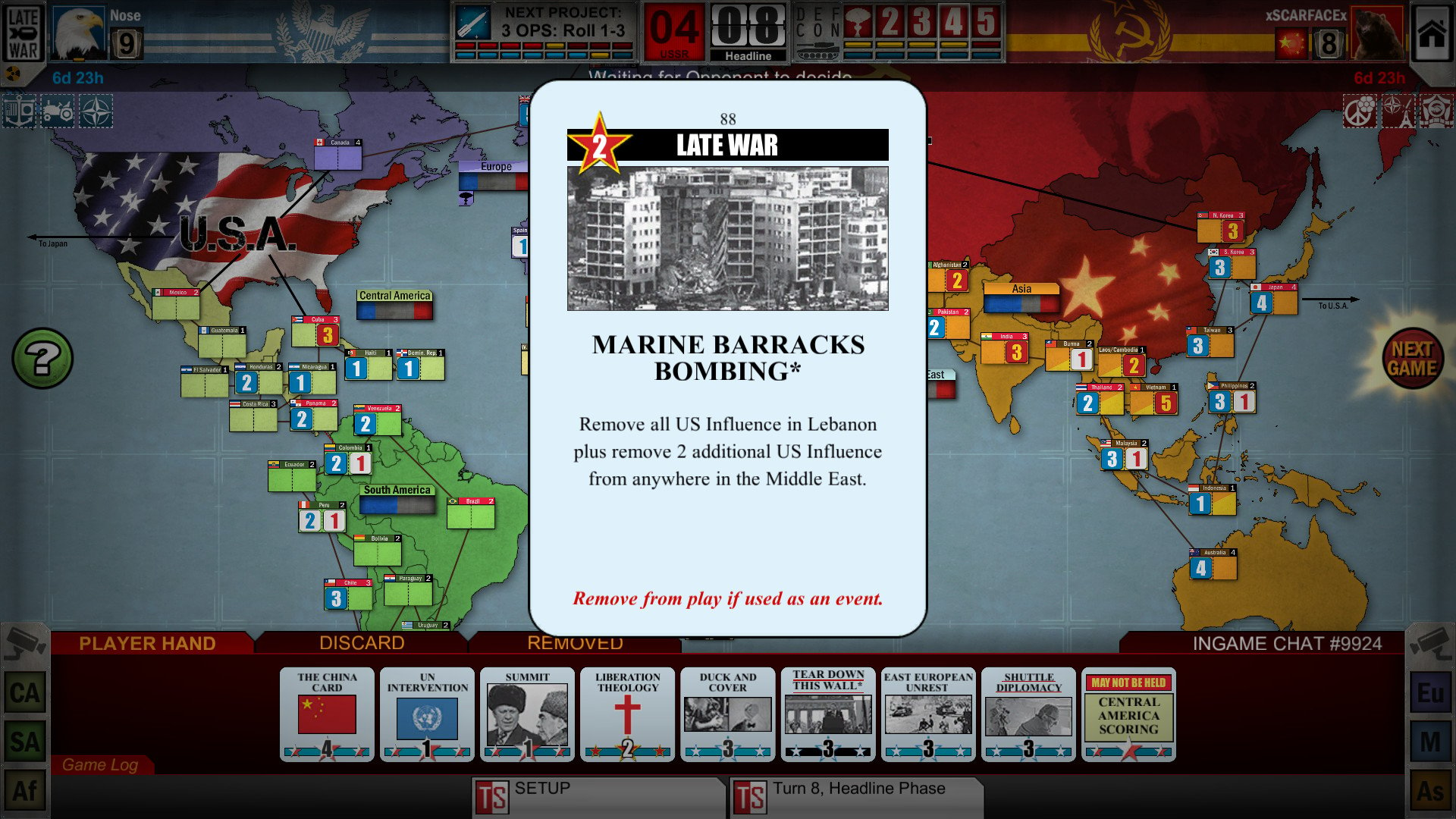 Buy Now
Buy Now
Twilight Struggle
Publisher: Asmodee Digital
Purchase: Amazon
The Korean War was a bloody, horrible three-year conflict, but it wound up being just one of the many proxy wars that erupted at friction points between the two global superpowers who found themselves locked in the Cold War for most of the second half of the twentieth century. Twilight Struggle is a game about the nightmarishly complex web of relationships and the razor-thin balance that existed between the U.S.-led West and the U.S.S.R., and while very little of it deals with the Korean War as a conflict, it’s a fantastic game that provides some valuable context.
The best way to play Twilight Struggle is with a friend, on a tabletop, but with the tabletop retailing for more than $100, the more affordable Steam version (or the even more affordable tablet version) might be a good way to see if it’s up your alley. The digital version also serves as a perfect way to learn the game, and you’ll be able to drop straight into the traditional experience once you’ve played a couple games on the computer.
There’s little I could add to what Matt Thrower has already written on Twilight Struggle, so I’ll point you to his glowing review here at The Wargamer, and to his discussion about the game with Shut Up & Sit Down’s Quentin Smith. As Twilight Struggle is Matt’s favorite game, he’s welcome to do the heavy lifting on explaining how it works and why it’s good. But one element of Twilight Struggle that Matt highlights in both pieces is the game’s card draught system, which I think is relevant here.
Both players draw cards and conceal them from each other, making Twilight Struggle a game about asymmetric information. That’s something that traditional wargames don’t often do very well, but it’s arguably the most important driving element of the Cold War and abstracting it to a simple mechanic like a hand of cards is very clever indeed.
User-created mods and scenarios
In the interest of time and space, I’ll go quickly through a few Korean War mods and scenarios available. Several total conversion projects focused on the Korean War have launched, but most of these have petered out before releasing a final version. But there are enough bits and pieces out there to get started. It all depends on what you want to accomplish.
If you own The Operational Art of War IV, you’ve got Korea as the setting for its starter scenario. It takes some doing, but scenarios built for previous TOAW titles, as well as Alternate Wars, can be converted to work in the latest software. Matrix forums user CaptainKoloth found an Alternate Wars Operation Chromite scenario, recreating the landing at Incheon, and updated it for TOAW4, which you can find here. It’s included in a massive pack of 415 old scenarios converted for use in TOAW3 available from The Operational Art of War Legacy Project, courtesy of Matrix forum user Ryan Crierie.
You can also pick up a Korean War scenario by the creator of The Operational Art of War himself, Norm Koger. He published his Korea 50-51 scenario in 2002, and it’s a 52-turn (one full year) battle between 239 Communist units and 174 United Nations forces. Koger built several interesting triggers into the scenario – for instance, if the UN drops airborne troops into either Soviet or Chinese territory, those countries will opt to intervene in Korea. “Korean winters are harsh,” he adds in the description. “Be prepared.” I can personally attest to the accuracy of this statement.
For John Tiller’s Campaign Series, forums veteran Mike “Warhorse” Amos has a Korean War mod that he’s been updating for years, now in version 2.02. You can find the download link in this post.
There are several Korean War mods for the Men of War series,but they’re all a bit half-baked in one way or another. You can try Korean War 1950-1953 for the original Men of War, or Korea 1953 v.0.9 for Assault Squad 2. Korea war (the Forgotten war) [sic] for Assault Squad has gotten a little attention on YouTube, but there’s very little to it and the project hasn’t been updated since 2012.
Arma 3 players are in pretty good shape here. There’s the Korean War mod by JackAttackJRMV. Right now, it’s just adding U.S. Marines and North Korean Army factions and vehicles to the game, but he has a host of additional features on the ‘planned’ list, including ROK forces, PRC forces, a new map, plus the MiG-15 and F-86 fighters. Jack recommends installing the Korean War Factions mod by jarrad96, which adds period-accurate uniforms and gear.
Both these mods require subscribing to several others in the Steam Workshop, but Steam will give you a handy list of links to go through whenever you’re missing any required components. Of course, if you’re just browsing and don’t feel like installing several gigabytes worth of mods, you can use the Get to da Choppa mod (requires Apex) and pop on the theme from M*A*S*H while you fly around Altis in a Bell 47.
Up in arms: Check out our list of the best Arma 3 mods
And that about wraps things up for our list of Korean War games. Researching this piece, I found that other writers have been complaining about the lack of games – of any genre – dealing with the Korean War for the full 30 years represented here, and the situation is unlikely to change any time soon.
